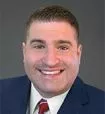Key points:
- Recent court decisions in disputes over coverage for storm damage illustrate pitfalls and ambiguities concerning deductibles, sublimits, and causation of damage
- Ambiguity must be construed in favor of the policyholder, but courts often disagree on whether policy language is ambiguous
- ICYMI, in 2021 Anderson Kill launched a Climate Change and Disaster Recovery Group that's on the front lines in these types of disputes
Climate change risks are at the forefront of virtually all policyholders' minds, and for good reason. Hurricanes, tornadoes, wildfires and other perils associated with climate change are occurring more frequently and producing more damage than ever before.
In 2021, Anderson Kill launched its Climate Change and Disaster Recovery practice group, bringing together decades of experience in representing policyholders in complex property and business interruption claims as well as in connection with D&O liability issues that are now front and center in a variety of lawsuits against companies alleging, for example, misrepresentations concerning the company's contributions to climate change. Most recently, Anderson Kill attorneys have been assisting their clients in recovering property insurance and business interruption proceeds stemming from Hurricanes Maria, Michael and Ida, California wildfires, and tornadoes in Kentucky, just to name a few.
Below we provide an update on three recent property insurance cases involving issues germane to climate change coverage, and one less recent case that illustrates how jurisdictions can differ on these types of issues.
Landmark Am. Insurance Company v. SCD Memorial Place
Under a deductible buyback policy, the Fifth Circuit Court of Appeals held that windstorm coverage did not provide coverage for flood damage resulting from Hurricane Harvey.
In Landmark Am. Ins. Co. v. SCD Mem'l Place II, L.L.C., 25 F.4th 283 (5th Cir. 2022), Landmark American Insurance Company ("Landmark") sold SCD Memorial Place ("SCD") a deductible buyback policy (the "Landmark Policy"), which a policyholder may purchase when the policyholder's primary policy has a high deductible. Such high deductibles are an increasingly common response by insurance companies to climate change. The Landmark Policy's insuring clause covered the deductible of the primary insurance policy.
In August 2017, Hurricane Harvey made landfall in Texas and Louisiana. Hurricane Harvey was a "Named Storm" as defined under the Landmark policy, and caused tremendous damage to one of SCD's insured properties. The damage occurred when the Buffalo Bayou overflowed its banks because of the hurricane and water flowed onto SCD's property. As a result of this damage, SCD submitted a claim under its primary policy, which paid out millions of dollars in excess of the "Windstorm Deductible." Because of the high Windstorm Deductible, SCD also submitted a claim to Landmark to cover its deductible under the primary policy.
Upon receipt of SCD's claim, Landmark initiated a declaratory judgment action to establish that it did not owe coverage. Landmark argued that the plain language of the insuring clause of the Landmark Policy covered damage caused by windstorm or hail only, and was not intended to cover every peril associated with a Named Storm. Landmark further argued that because the damage to SCD's property was not caused by windstorm or hail, but by water, the Landmark Policy did not apply.
SCD agreed that the Landmark Policy was unambiguous, and contended that because Hurricane Harvey was a Windstorm, all damage relating to Hurricane Harvey was covered.
The court agreed with Landmark, finding that the cause of SCD's loss was a flood and not a Windstorm or Hail, such that SCD's loss was not covered under the Landmark Policy.
Wakefern Food Corp., et al. v. Lexington Insurance Company, et al.
In 2014, a New Jersey trial court found that damage to property in New Jersey resulting from Superstorm Sandy was subject to a named storm deductible, because at least some insured property was damaged before the hurricane was downgraded to a post-tropical cyclone.
In Wakefern Food Corp., et al. v. Lexington Insurance Company, et al., Docket No. MID-L6483-13 (N.J. Super. Ct. Law. Div. Oct. 29, 2014), policyholder Wakefern Food Corp ("Wakefern") sustained over $50 million in losses at its grocery stores as a result of Superstorm Sandy. Wakefern is a buying cooperative of owners/ operators of supermarkets that purchased commercial property insurance from defendant Lexington Insurance Company. The Lexington policy at issue contained a "2% [deductible] of Total Insurance Values at the time of the loss of each location involved in the loss or damage arising out of a Named Storm ...", defined as "a storm that had been declared by the National Weather Service to be a Hurricane Typhoon, Tropical Cyclone, Tropical Storm or Tropical Depression." Lexington withheld over $23 million based on its contention that the policy's "Named Storm" deductible applied.
Wakefern argued that Superstorm Sandy was not a Hurricane, Typhoon, Tropical Cyclone, Tropical Storm, or Tropical Depression when it made landfall in New Jersey, and thus the Named Storm Deductible should not apply.
The parties cross-moved for summary judgment seeking a determination as to the application and scope of the policy's Named Storm deductible to Wakefern's loss. Wakefern argued that Superstorm Sandy was not a Hurricane, Typhoon, Tropical Cyclone, Tropical Storm, or Tropical Depression when it made landfall in New Jersey, and thus the Named Storm Deductible should not apply. In support of this argument, Wakefern argued that Sandy hit New Jersey at 8:00 p.m. EST, one hour after it was downgraded to a "post tropical cyclone" by the National Hurricane Center. Furthermore, Wakefern cited to former New Jersey Governor, Chris Christie's, Executive Order No. 107, which precluded insurance companies from applying hurricane deductibles to Superstorm Sandy claims. In opposition, Lexington highlighted the deductible provision's "arising out of" language and New Jersey precedent broadly construing such language, and argued that the damage asserted in the policyholder's claim consisted of losses that began before Hurricane Sandy was declared a "post-tropical cyclone," and therefore arose out of Sandy while the storm was still a hurricane.
The court found that "[a]pplication of the Named Storm deductible for damage caused by Sandy [was] consistent with the clear and unambiguous language of the Policy." Its decision noted that: (1) while the eye came ashore at 8:00 p.m., it was undisputed the damage had begun to occur at some Wakefern locations well before 7:00 p.m. (the time when Superstorm Sandy was designated as a post tropical cyclone), with power outages being reported as early as 4:30 in the afternoon; (2) "the phrase 'arising out of' . . . should be treated liberally"; and (3) Executive Order No. 107 applied only to homeowners' insurance claims and was "inapplicable to the instant commercial matter." As a result, Judge Francis found "that the Pre7:00 p.m. damage while Sandy was still a hurricane created a substantial nexus between the storm and Wakefern's total losses" and justified application of the "named storm" deductible.
The court rejected Wakefern's argument that TIV was ambiguous, finding that "TIV is a commonly-used phrase in the insurance industry ... TIV refers to everything insured under a policy."
The Lexington Policy also afforded wind and hail coverage up to a $150 million sublimit. The wind and hail coverage was subject to either a $250,000 per occurrence deductible or a deductible of "2% of Total Insurable Values at the time of the loss at each location involved in the loss or damage arising out of a Named Storm." The phrase "total insurable values" (TIV) was not defined. Wakefern had argued that TIV was ambiguous and confusing to the average policyholder and therefore must be construed in its favor. The court rejected Wakefern's argument that TIV was ambiguous, finding that "TIV is a commonly-used phrase in the insurance industry referring to the sum of the full value of the insured's covered property, business income values, and other covered property interests ... TIV refers to everything insured under a policy, including but not limited to the structure's value, contents, materials, business income, and equipment, and is calculated using a policy's Statement of Values."
McDonnel Group, L.L.C v. Starr Surplus Lines Insurance Company
Seven years after Wakefern, the Fifth Circuit Court of Appeals held that a named storm deductible was ambiguous with respect to whether the deductible applied to the flood sublimit or the total insured value. Accordingly, the court interpreted the deductible provision in favor of the policyholder.
Unlike the court in Wakefern, the Fifth Circuit Court of Appeals in McDonnel Group, L.L.C. v. Starr Surplus Lines Insurance Company, 15 F.4th 343 (5th Cir. 2021), found that the policy's deductible language was ambiguous, and should be viewed in the light most favorable to the policyholder. McDonnel Group LLC ("McDonnel"), which served as general contractor for New Orleans-based Jung Hotel and Residences' renovation project, purchased insurance from AIG unit Lexington Insurance Co. and Starr Surplus Lines Insurance Co. While the construction project was underway, there was heavy rain in the area causing the project to suffer water intrusions, resulting in substantial damage.
A dispute ensued between McDonnel and Starr as to the applicable deductible. The Starr policy included the following language: "[T]he maximum amount this Company will pay for loss or damage ... in any one policy term shall not exceed the following amounts for loss caused by the following perils ... $10,000,000 by the peril of FLOOD* — Term Aggregate." The policy also included a deductible for flood damage of "5% of the total insured values at risk at the time and place of loss subject to a $500,000 minimum deduction as respects as respects [sic] FLOOD*."
The parties disagreed as to the extent of values to which the 5% deductible should apply. McDonnel argued that the 5% deductible applied to the $10 million flood sublimit, so the applicable deductible was $500,000. As a result, McDonnel argued it was entitled to payment of $2.7 million, or $500,000 less than the total damage of $3.2 million. Starr argued the 5% deductible applied to the total insured values at risk, which it asserted was $68.9 million, making the deductible $3.4 million. Starr argued that because the deductible was greater than the $3.2 million claim, it did not have to pay McDonnel's claim.
McDonnel filed suit in U.S. District Court in New Orleans, which granted Starr's motion for partial summary judgment, deeming the policy unambiguous. On appeal, the Fifth Circuit Court of Appeals found that both McDonnell's and Starr's interpretations of the deductible were reasonable, so the policy was ambiguous. The court remanded the case for further proceedings. Pursuant to Louisiana law, a court can review extrinsic evidence when interpreting ambiguous policy language, so the Court of Appeals directed the lower court to consider extrinsic evidence in interpreting the policy.
The 5th Circuit "found that both McDonnell's and Starr's interpretations of the deductible were reasonable, so the policy was ambiguous."
Healthquest of Cent. Jersey, LLC v. Antares Aul Syndicate 1274
In 2020, the New Jersey District Court considered various evidentiary issues in a property insurance case, three of which are significant in the climate change context. First, the court found that an expert witness was not required for a policyholder to prove business interruption losses, unless the calculation of the losses requires a projection. The court also denied the insurance companies' attempt to have the court establish the period of restoration during which business interruption losses would be measured, finding that issues of fact precluded such a finding. Finally, the court permitted a weather expert to rely on weather reports outside the immediate vicinity of the damaged property, finding that the reports fell within two exceptions to the hearsay rule
In Healthquest Of Central Jersey, LLC, v. Antares Aul Syndicate 1274, Civil Action No. 18-12375 (MAS) (DEA), (D.N.J. Jul. 31, 2020), plaintiffs/policyholders Healthquest of Central Jersey, LLC and Diamond Nation, LLC operate a health and fitness club along with a sports and training facility. Defendants/Insurance companies Antares Aul Syndicate 1274, Liberty Syndicate Lib 4472, Rockhill Insurance Company, and International Insurance Company of Hannover Se. issued a property insurance policy to the policyholders. As recounted in the decision:
The policy covered "external risks of direct physical loss unless the loss was limited or caused by a peril that was excluded." Under the policy, "collapse" was an excluded peril, unless the collapse occurs because of a "specified peril," "hidden decay; hidden insect or vermin damage," "weight of people or business property," "weight of rain that collects on a roof," or "the use of defective material or methods in construction, remodeling, or renovation if the collapse occurs during the course of construction, remodeling, or renovation."
From November through April, the policyholders' on-sight baseball field was covered by an air-supported dome structure. During a winter storm in January 2016, the original dome failed, and one of the policyholders had a replacement dome constructed. On March 14, 2017, the replacement dome collapsed after a severe winter storm passed the area. The policyholders timely notified the insurance companies of the collapse and sought coverage under the policy. The insurance companies denied the policyholders' claim based on the policy's exclusions.
These cases illustrate the complexity and factspecific nature of property insurance coverage for storm damage.
Prior to trial, the court addressed a number of evidentiary issues in its decision, including three of particular note in the climate change context. First, the court addressed the issue of whether lay testimony was sufficient to prove the policyholders' damages, or whether expert testimony was required. The court held that business interruption losses could be proven through lay testimony, but to the extent the calculation of such losses require a projection, then any projections must be proven by expert testimony. Thus, the court allowed the policyholder to present lay testimony in support of its business interruption losses, but only to the extent that the calculation of those damages did not require projections.
The court also addressed the insurance companies' attempt, through a motion in limine, to have the court establish the relevant period of restoration for the calculation of business interruption losses. In this case, the dispute between the parties was particularly acute. The insures asserted that the period of restoration was just eighteen days, while the policyholders argued for one year. The court found that factual disputes between the parties on this issue required that the finder of fact resolve it, and that the issue was not appropriate for determination on a motion in limine.
Finally, the court denied the policyholders' attempt to preclude the insurance companies' weather expert from relying on NOAA weather reports outside the immediate loss location. The court found that the NOAA weather reports fall within hearsay exceptions for records or statements of a public office, see Fed. R. Evid. 803(8)(B), and for "[m]arket quotations, lists, directories, or other compilations that are generally relied on by the public or by persons in particular occupations." Fed. R. Evid. 803(17). The court also found that the probative value of the weather reports outweighed any potential prejudice, and that the policyholders' concerns over the fact that the data was not for the immediate loss location concern the weight of the evidence as opposed to its admissibility.
These cases illustrate the complexity and fact-specific nature of property insurance coverage for storm damage. The application of deductibles and sublimits may depend on nuances of policy language, the interplay of different causes of storm-related damage, and even the timing of various phases of a storm's movement through various phases of intensity. Given these complexities, policyholders often have a credible claim that the reach of various exclusions, deductibles and sublimits is ambiguous. In such cases, policyholders can often rely on the core insurance law principle that ambiguity of policy language must be construed in favor of the policyholder.
The content of this article is intended to provide a general guide to the subject matter. Specialist advice should be sought about your specific circumstances.


